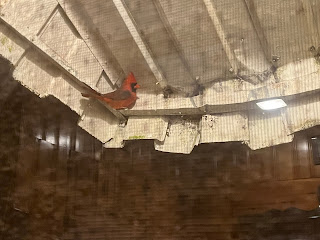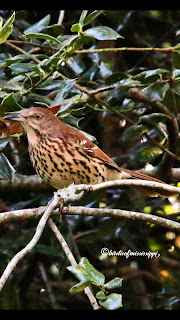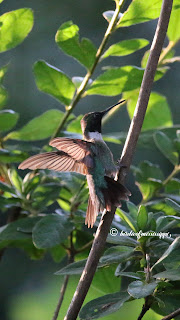The Male Northern Cardinal Roosting At My Backdoor

As I looked out the backdoor under the awning I saw in the late evening light perched in the corner of the awning a beautiful Northern Cardinal. His feathers were perfect and tucked close to his body. My grand-daughter, Laney, was the first one to actually see it. She had switched on the back porch light and she hollered out, “Mimi…Pepe…have you seen this red Cardinal?” We answered her with “No. We have never seen it there before.” In fact, we couldn’t tell if it was there by choice or if he was trapped, because even though we were very close to him, he didn’t fly away! As we looked at him, he looked at us, but he didn’t move. So we turned off the light and left him alone. The next morning when I rose at 4:30 am, I turned on the light to see if our little visitor was still there and guess what!? He was still there! So every so often, that morning, I would go to the backdoor and peek out to check on him. He stayed until t...





